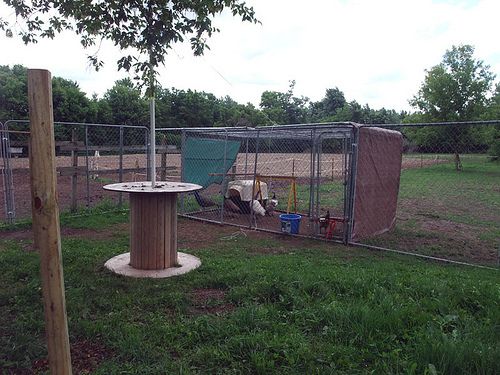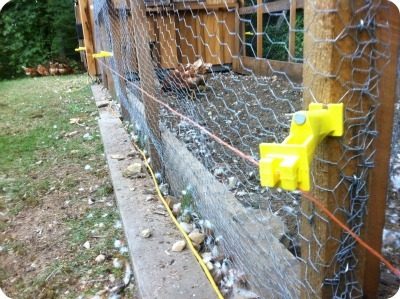I've been browsing this site for quite a while now. This is my first post. I love the site there are some great ideas out there. It can be pretty confusing at times though because so many people have conflicting opinions on what is best.
I have no birds, yet. I'm in love with the idea of peas especially whites. I have an idea for a large aviary (about 1000 sq ft) and the wife is game. But, I have a few concerns, chiefly predators. I have seen racoons, hawks, eagles, fox, coyotes, opossum, and even beaver and turkeys nearby but never on my property. I hear but have never spotted at least a pair of owls hooting at each other. I have seen plenty of mice, squirrels, deer and snakes. I'm sure a few captive birds will attract everything I have and haven't seen. I know I need to provide great predator protection.
My biggest concern is the top. I am considering flight netting but I don't want to learn the hard way that it would be a huge squirrel chew toy. I wouldn't mind them using it as a play pen. I do love to watch their antics but I don't want it eaten up. Does anyone know if squirrels will be a problem with flight netting?
Additionally, I have to wonder why standard hex shaped woven poultry wire is insufficient. I have heard reports that predators get through it but I have a hard time believing that to be true if it were properly installed. I suspect that the biggest problem with it is rust and longevity. Any thoughts, because the much cheaper price just might justify it's use?
My plan entails a flight pen about 32x32, no less than 8 foot and mostly 12 foot tall with an adjacent shelter. I know this will be plenty of space for quite a few peas but I will probably limit it to only a few. I doubt that I will free range them because I don't want to loose them and certainly don't want complaints from the neighbors. Let's hear it.
I have no birds, yet. I'm in love with the idea of peas especially whites. I have an idea for a large aviary (about 1000 sq ft) and the wife is game. But, I have a few concerns, chiefly predators. I have seen racoons, hawks, eagles, fox, coyotes, opossum, and even beaver and turkeys nearby but never on my property. I hear but have never spotted at least a pair of owls hooting at each other. I have seen plenty of mice, squirrels, deer and snakes. I'm sure a few captive birds will attract everything I have and haven't seen. I know I need to provide great predator protection.
My biggest concern is the top. I am considering flight netting but I don't want to learn the hard way that it would be a huge squirrel chew toy. I wouldn't mind them using it as a play pen. I do love to watch their antics but I don't want it eaten up. Does anyone know if squirrels will be a problem with flight netting?
Additionally, I have to wonder why standard hex shaped woven poultry wire is insufficient. I have heard reports that predators get through it but I have a hard time believing that to be true if it were properly installed. I suspect that the biggest problem with it is rust and longevity. Any thoughts, because the much cheaper price just might justify it's use?
My plan entails a flight pen about 32x32, no less than 8 foot and mostly 12 foot tall with an adjacent shelter. I know this will be plenty of space for quite a few peas but I will probably limit it to only a few. I doubt that I will free range them because I don't want to loose them and certainly don't want complaints from the neighbors. Let's hear it.





